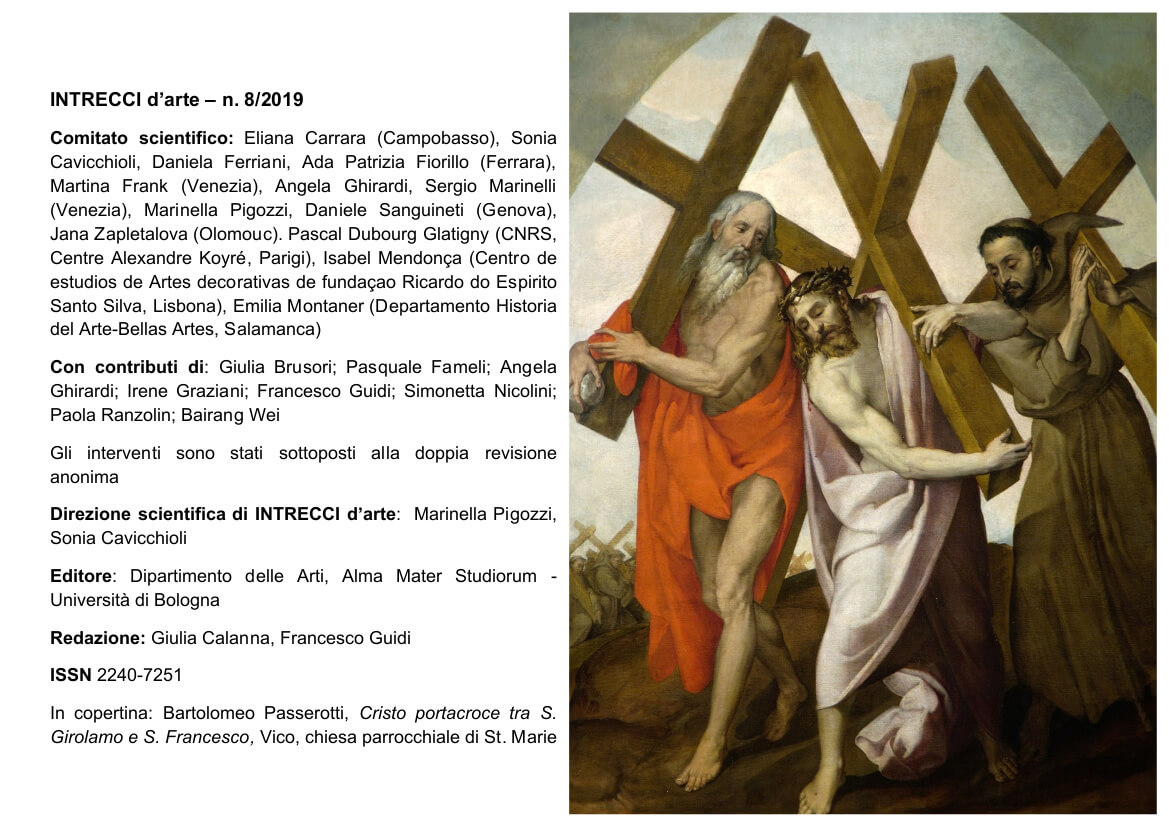The History of Cyrus in Vizzani Palace, an iconographic interpretation
DOI:
https://doi.org/10.6092/issn.2240-7251/10145Keywords:
Cyrus the Great, Frieze, Bologna, Herodotus, Mirror of the princes, Fortune, Vizzani PalaceAbstract
This article focuses on the frescoed frieze in Palazzo Vizzani, the one with The History of Cyrus the Great. It presents a relatively rare theme in the visual arts of the sixteenth century which appeared only in some series of tapestries commissioned by powerful aristocratic patrons for their residences. This is due to the fact that this character (Cyrus the Great) was associated with the genre literary of the 'Mirror of Princes'. The link can be traced back to the Ciropedia of ancient Greece, in which Xenophon described Cyrus the Great as a perfect monarch, a figure that is considered an idol by many sovereigns of the classical era and even of the Renaissance. However, another Greek writer, Herodotus, created a completely different Cyrus in The Histories, which is also the main literary source inspired the pictorial frieze in Palazzo Vizzani. The figure of Cyrus turns out to be more complicated and controversial in The Histories, it's not so much a perfect sovereign, but more like a tragic hero of ancient Greece. It is worth noting that the story of his life is in accordance with the tradition of 'the fate of the illustrious condottieri' in medieval literature, in which the fate of the protagonist is thought to be dominated by unpredictable Fortune. For this reason, I proposed that 'the concept of Fortune' is the key to interpreting the profound meaning of this frieze.Downloads
Published
How to Cite
Issue
Section
License
Copyright (c) 2019 Bairang Wei
The copyrights of all the texts on this journal belong to the respective authors without restrictions.
This journal is licensed under a Creative Commons Attribution 4.0 International License (full legal code).
See also our Open Access Policy.
Images and photographs may have different terms of license.
In making material available online the Journal acts in good faith. Parties who have questions or who wish to contest the use of specific works may contact the Editor in chief.
Metadata
All the metadata of the published material is released in the public domain and may be used by anyone free of charge. This includes references.
Metadata — including references — may be re-used in any medium without prior permission for both not-for-profit and for-profit purposes. We kindly ask users to provide a link to the original metadata record.






